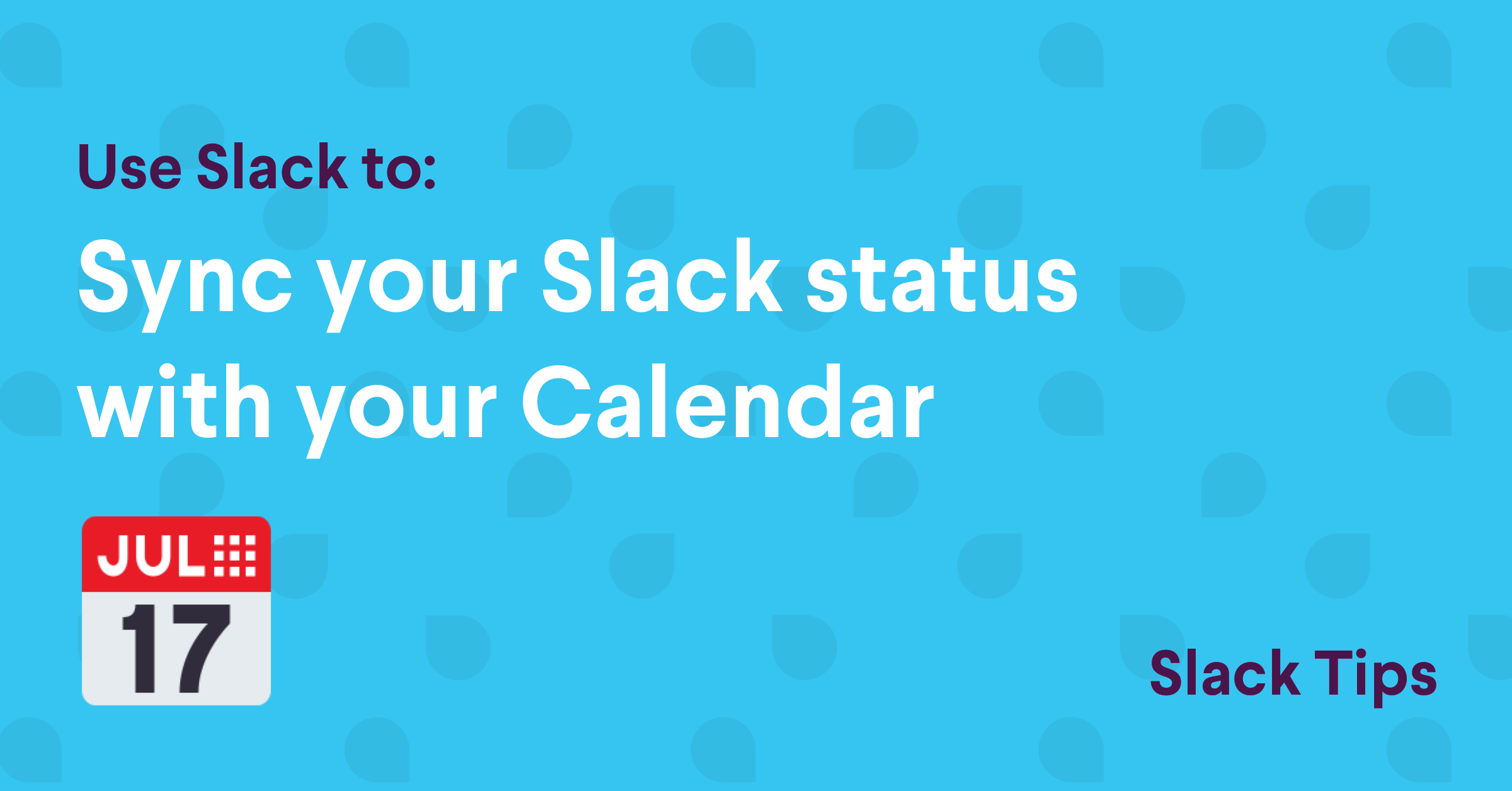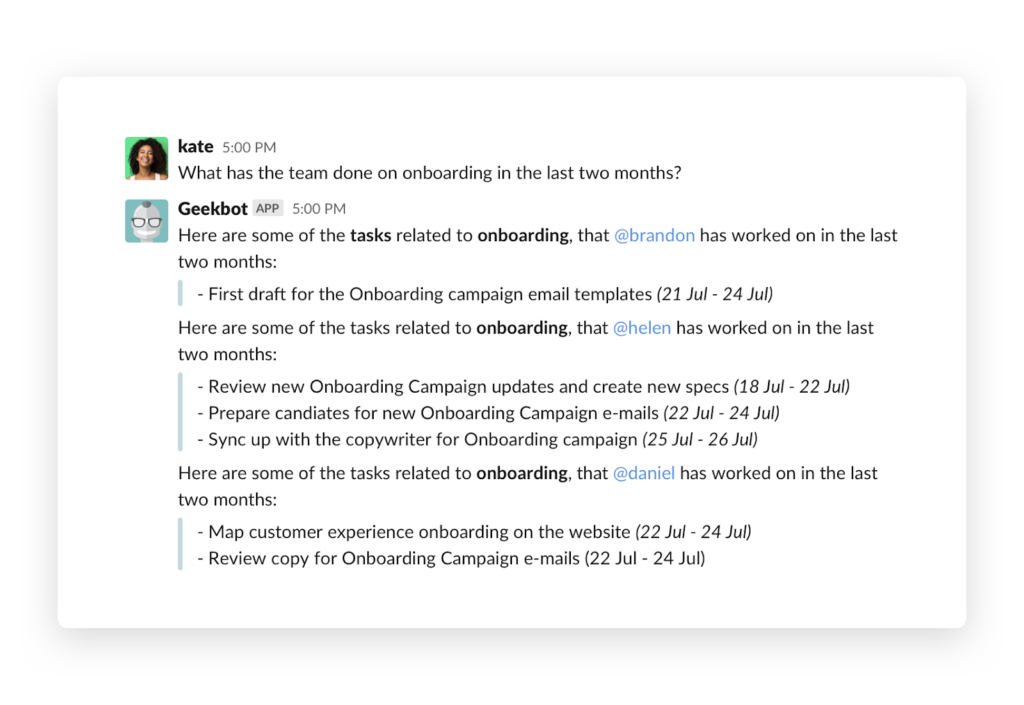


These discussions happen in person-to-person channels as well as open or closed team channels.

They are often accompanied by pasted architecture diagrams, links to source control systems like Gerrit/GitHub, or Quip documents. Discussions often involve many people (3–10) and occur over multiple hours or even days. These discussions concern product architecture (“ Should we better use database X or Y for this service?”) as well as implementation details (“ What is the best way to make this class thread-safe?”). Deep collaboration, discussion, ideation. Many of these sessions involve a fair amount of back and forth (“ But I already tried X, and then I get error Y”) before an issues is resolved (“ Cool, that works, thanks!”). Questions are often asked by new or irregular channel members and answered by team members or other individuals with expertise in the particular subject matter. This pattern includes technical Q&A (“ How do I add a new dependency in Gradle?”) or discussions on product bugs (“ What does ‘Error 123’ mean?”). Let’s take a look at some common Slack communications patterns.Īsking for help. MOTM slackline image taken from raed Usage patterns


 0 kommentar(er)
0 kommentar(er)
